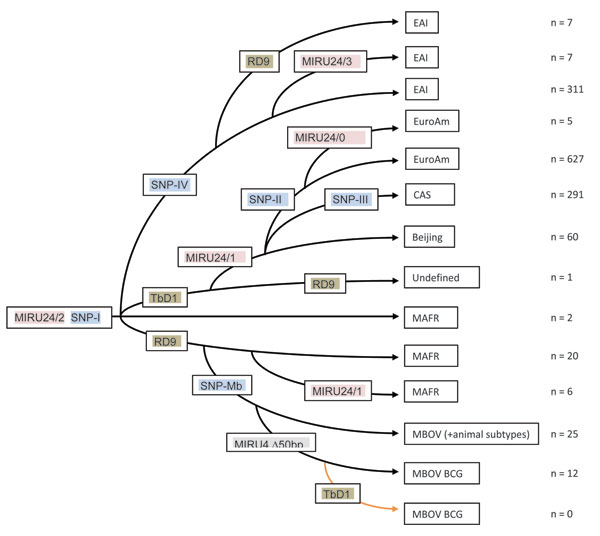Volume 16, Number 2—February 2010
Research
Associations between Mycobacterium tuberculosis Strains and Phenotypes
Figure 2

Figure 2. Maximum-parsimony tree constructed based on 3 independent sets of markers: large sequence polymorphisms (LSPs), single nucleotide polymorphisms (SNPs), and number of repeats in the locus 24 using the following assumptions: 1) SNPs are irreversible unique events; 2) LSPs are irreversible rare events; 3) spoligotypes are not produced by convergent events; and 4) variable number tandem repeat (VNTR) loci can both acquire and lose repeats. EAI, East African–Indian; MIRU, mycobacterial interspersed repetitive unit code; EuroAm, European American; CAS, Central Asian; MBOV, M. bovis; MAFR, M. africanum; BCG, bacillus Calmette-Guérin. The X, T, LAM, S, and Haarlem families are European American types.
Page created: December 13, 2010
Page updated: December 13, 2010
Page reviewed: December 13, 2010
The conclusions, findings, and opinions expressed by authors contributing to this journal do not necessarily reflect the official position of the U.S. Department of Health and Human Services, the Public Health Service, the Centers for Disease Control and Prevention, or the authors' affiliated institutions. Use of trade names is for identification only and does not imply endorsement by any of the groups named above.